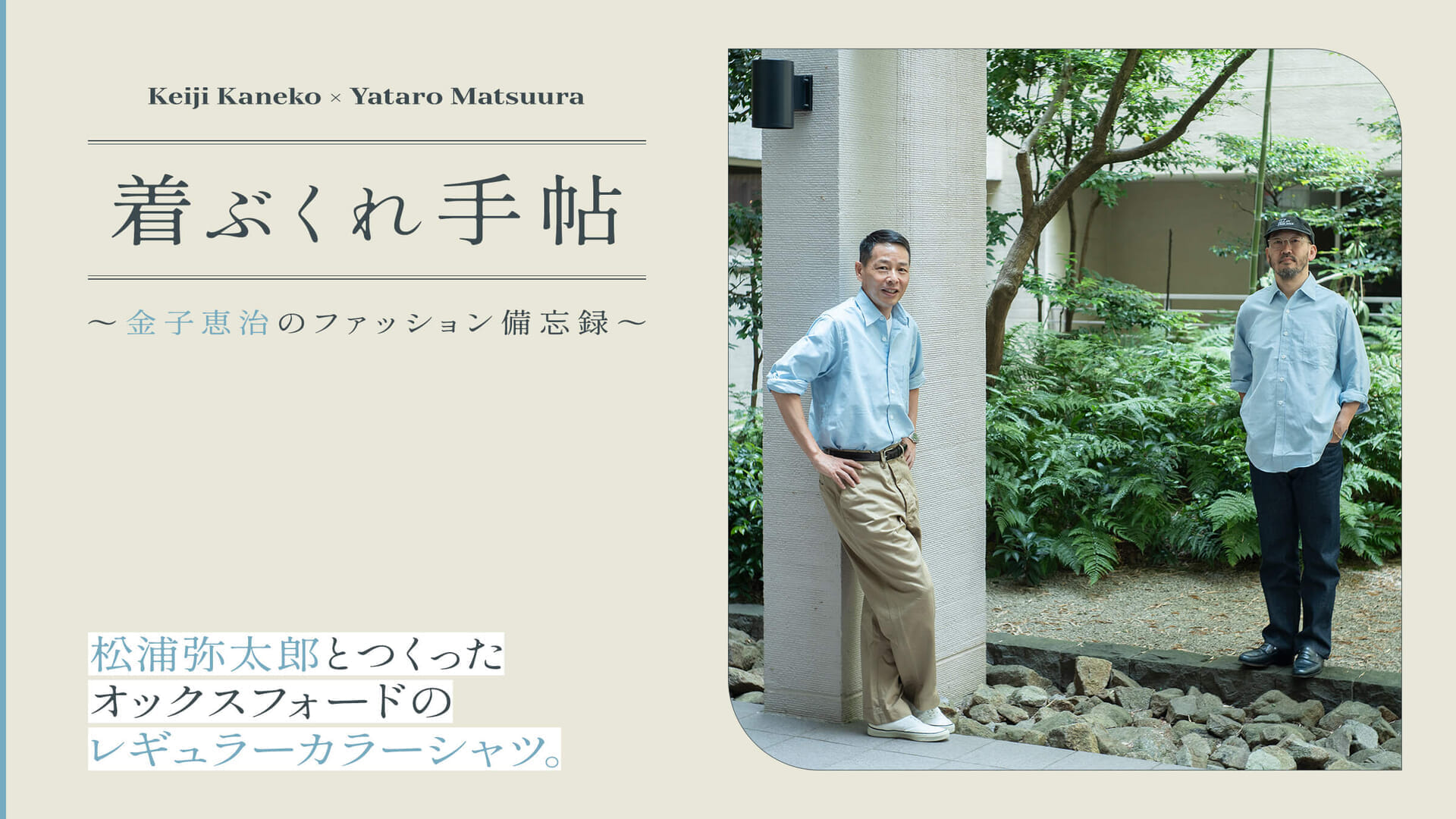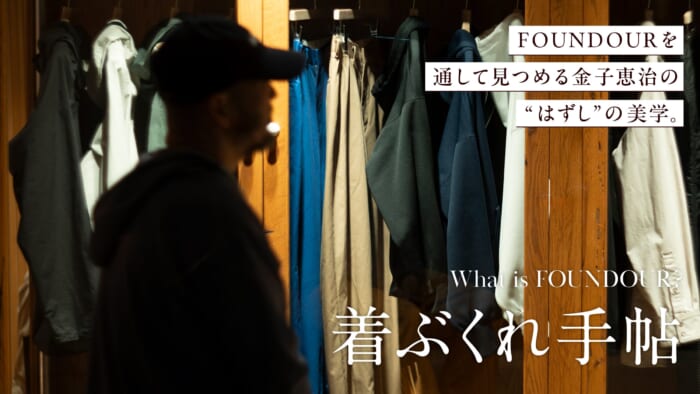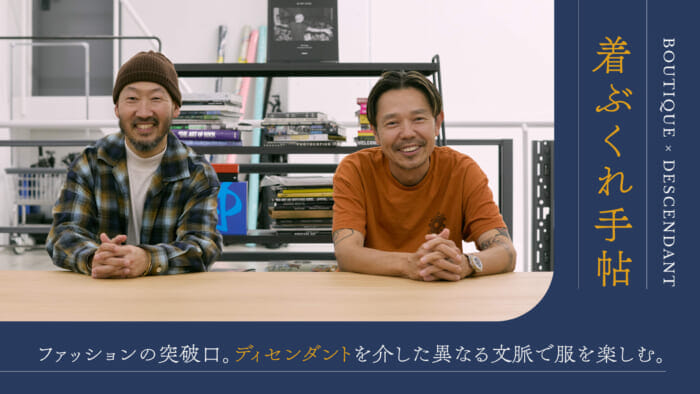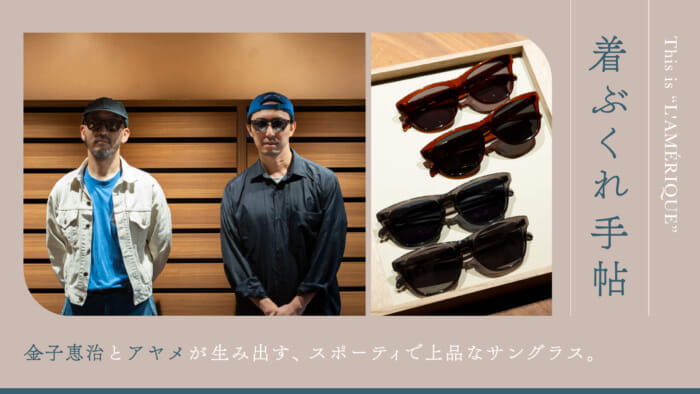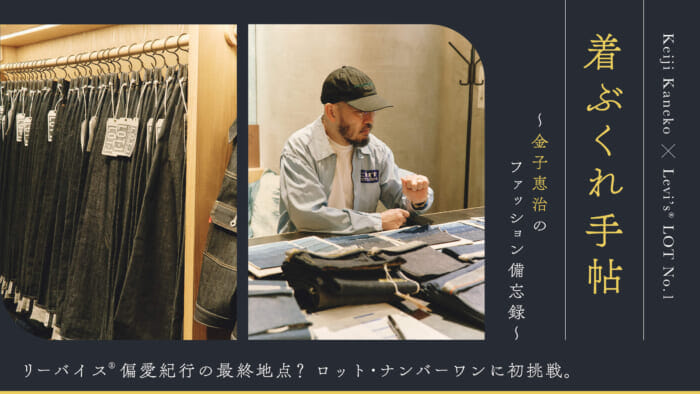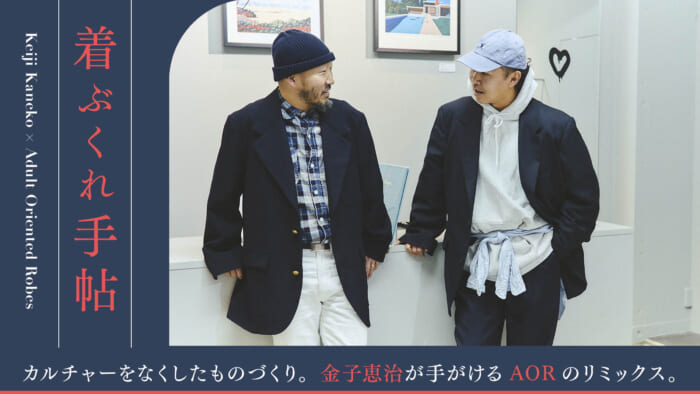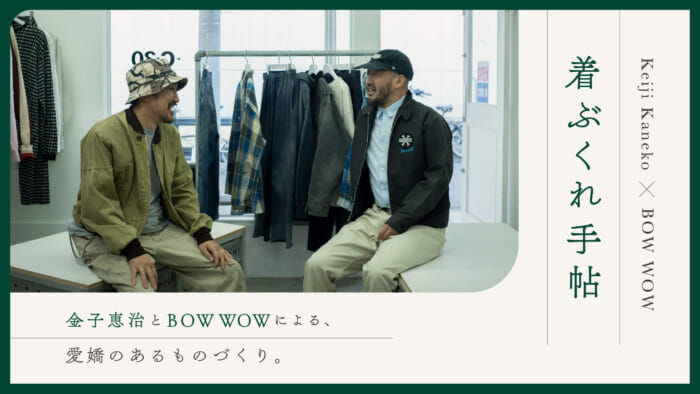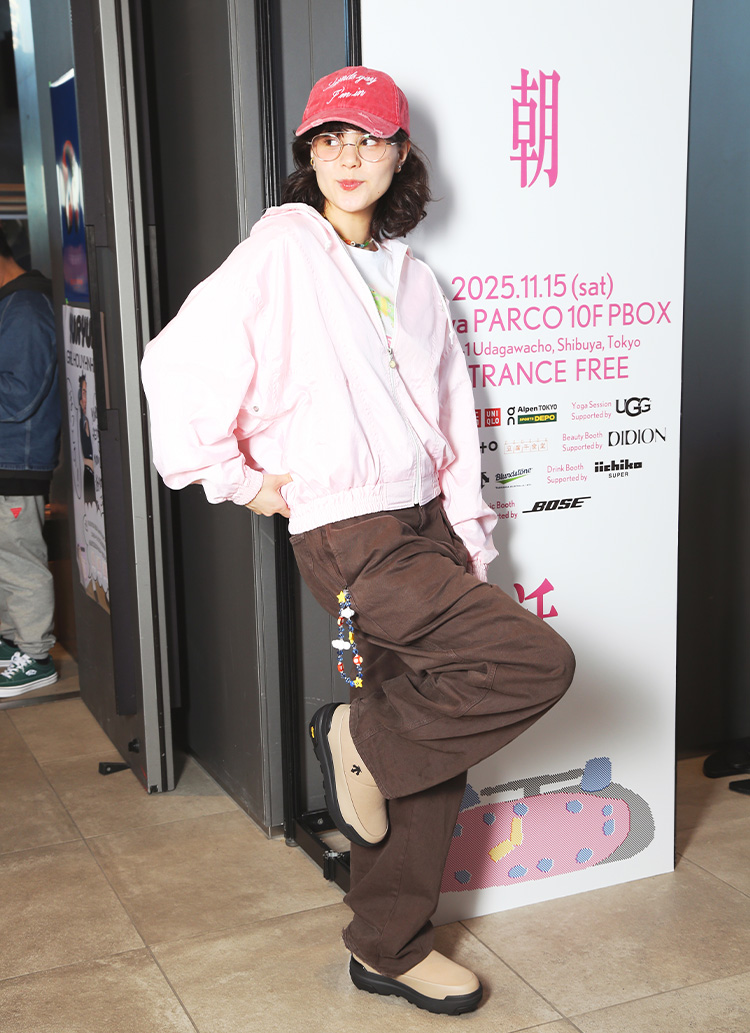Some of it is possible because it is a really small project.
. You did not only examine the fabrics , but also the small details without overlooking them.
Matsuura: I had been wearing it for many years, but the more I looked at it while communicating with Mr. Kaneko, the more I discovered.
Kaneko: There was - (laughs).
Matsuura: These two original items have slightly different pocket shapes.

Kaneko: The "U.S. AIR FORCE" has a rounded and charming shape. We thought it was cuter that way, so we adopted that detail.
Matsuura: . If you look closely, the pattern of the collar is also a little different. And so are the cuffs.

Kaneko: Yes, yes. Van Heusen" has a sword bolo and a dressy look. On the other hand, "U.S. AIR FORCE" has the details of "ittekoi" workwear.
Matsuura: . If it's itty bitty, the vintage look becomes too strong.
Kaneko: . We ended up adopting the sword bolo design. Even the same item of vintage clothing can have slight individual differences depending on when it was made. I always wonder why this is so. I always wonder why.

. So you two discussed and decided which details to adopt.
Matsuura: Yes, it was. But it was very sensible, you know. It's totally a matter of taste.
Kaneko: There are no rules. We would explore each other's moods and say, "Let's do it this way.

Matsuura: . and then there's the stitching. . how far should we go to reproduce that, and what should we do with the white patch on the back of the front placket? . In the end, we kept the patch.
Kaneko: These are not sexy either, but I'm kind of attracted to them (laughs).
This kind of detail is not likely to be found in European vintage clothing.
Matsuura: I think so.
Kaneko: It's not this tacky thing to do, or rather, it's not fashionable at all. But that's what I like about it.
Matsuura: It's not fashion, it's a tool.
Kaneko: That's where we are moaning on our own (laughs).
Does the finished shirt look more like a "Van Heusen" shirt?

Kaneko: Yes, that's right. When you try to make things in Japan, you can't help but make things carefully. No matter how you do it, you can never achieve the quality of "made in the USA. Considering this, we decided to base our products on this one.
. If you look closely, you can see that it is made with a lot of attention to detail.
Kaneko: I think the 50's was the time to do that kind of thing. After that, though, mass production became the norm and people stopped doing anything extra.

Kaneko: . If you look closely, you will see that the collar is also curved. It would have been easier to make a straight collar. The "U.S. Air Force" has become very poorly made in recent years, and I think this is the last good era of the U.S. Air Force.

Matsuura: Also, I like the pleats on the back. . this halfway look is cute (laughs). A little more plucking would have given it a solid look, as a tuck.
I feel that the accumulation of such details leads to the charm of the product.
Matsuura: I think so. There are many points that we can moe.
Kaneko: . also, I had a hard time with the dough. There are knots in some parts. Even before the fabric was made, I was told by the fabric maker, "Please don't make it a "B" product, because it will definitely have knots,
Matsuura: That's a very nice point from my point of view. . because all the Oxfords I own are like that.
Kaneko: After all, he said, if you aim for this fabric, it will become unstable. It may be OK if you sell your products in a store, but nowadays you have to sell them through e-commerce as well, and if you think about the trouble you will have later on, I am sure you will not be able to produce satisfactory products. However, in our case, we are doing this as a really small project, so I think there is a part of us that can make it work.

Flyter oxford shirt ¥31,000


